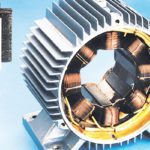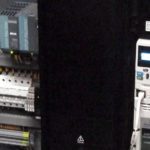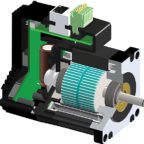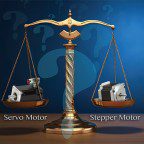When driving stepper motors open loop, there is no feedback to ensure that the motor is operating as expected. To ensure the stepper motor behaves as expected, open-loop drives use pulse and direction commands.
Pulse commands are signals sent to a stepper motor by the drive. They are “pulses” of current that cause the motor to step. Every full step requires a pulse sent from the drive. That is, in full-step mode, an example 200 step motor would need 200 pulses to turn one full revolution. Thus, the speed of the motor is directly related to the rate of the pulses. The faster the pulses are sent by the drive to the motor, the faster the motor runs.
The drive receives the controls for these pulse from the controller. As such the drive must have the proper inputs to accept these signals. Also, the controller must output compatible commands to the drive for everything to function properly. Also, make sure to match drive, stepper motor and controller as best as possible for a properly functioning system. Always remember to consult documentation and manufacturers with any questions.
Direction commands govern in which direction the stepper motor spins. That is, looking at the shaft of the stepper motor head-on, either clockwise or counterclockwise. This is done by offsetting the pulses from each other. Leading or lagging one set of signals from the other by the drive and controller produces clockwise or counterclockwise rotation in the stepper motor. Here too, make sure that controller, drive and stepper motor are all compatible with each other. Using incompatible direction commands can cause a system to operate incorrectly if the direction of rotation is important. Also, keep in mind that indexers and encoders can inform operators of the direction the system is operating without necessarily requiring closed-loop controls. As always, engineers should consult component documentation for details. For more information, read Omega.com’s Stepper Motors: Introduction to Stepper Motors.







Leave a Reply
You must be logged in to post a comment.